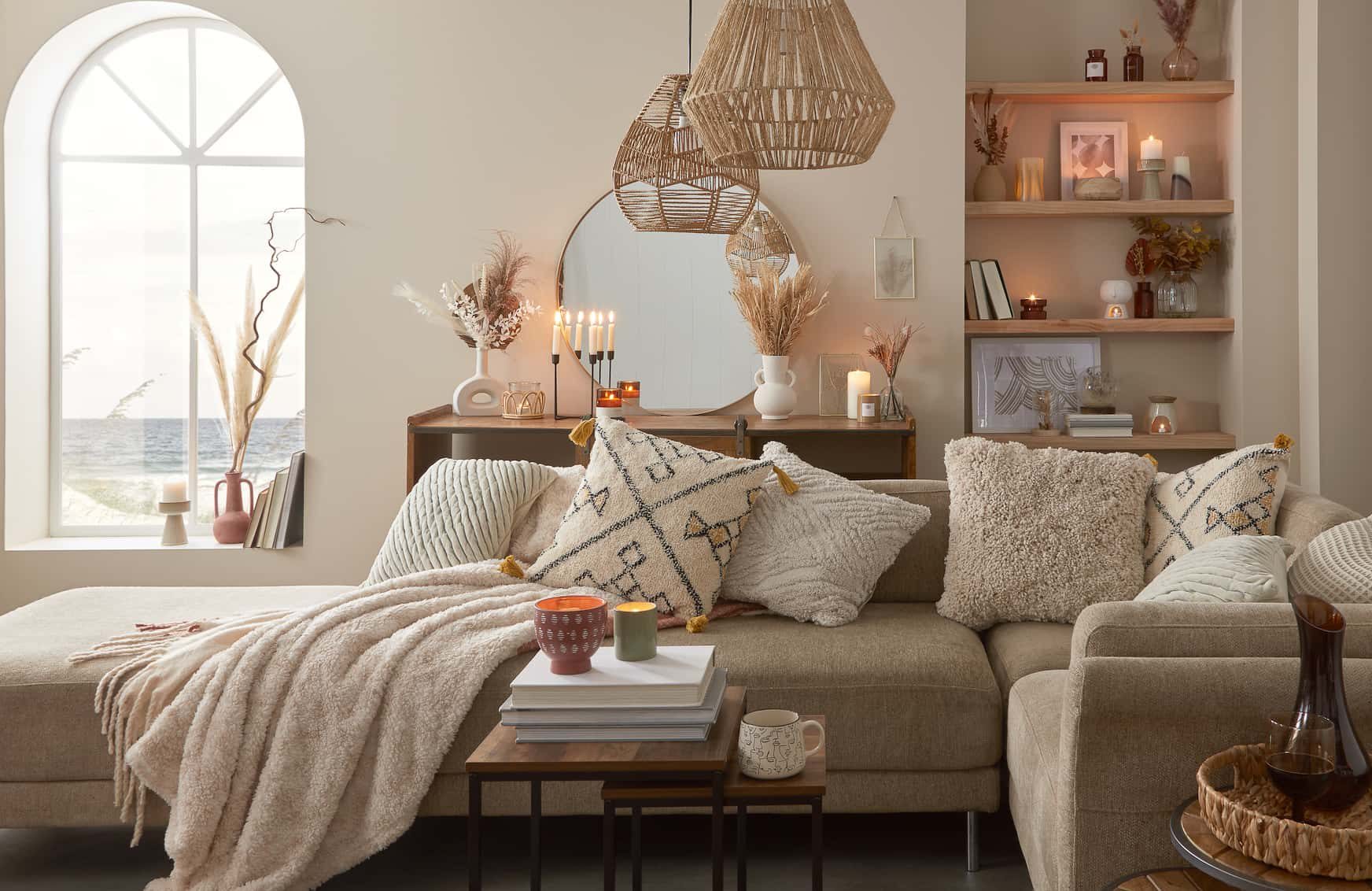Looking to infuse your living room with a touch of nature’s tranquility? The resurgence of biophilic design has revolutionized how we approach interior spaces, making natural living room decor more relevant than ever.
This aesthetic not only creates a serene atmosphere but also establishes an intrinsic connection between our indoor sanctuaries and the organic world outside. The juxtaposition of natural elements with contemporary living spaces has become increasingly paramount as urbanization continues to distance us from nature.
By incorporating organic materials, textures, and elements into your living room, you can create a space that’s both aesthetically pleasing and psychologically nurturing.
Whether you’re drawn to the minimalist appeal of Scandinavian design or the rustic charm of Mediterranean aesthetics, natural decor elements can seamlessly integrate into any style preference.
Natural Living Room Decor Ideas
This comprehensive guide will explore fourteen innovative ways to bring the outdoors in, transforming your living room into a harmonious retreat that celebrates the beauty of nature while maintaining modern functionality.
1. Indoor Plants as Living Art
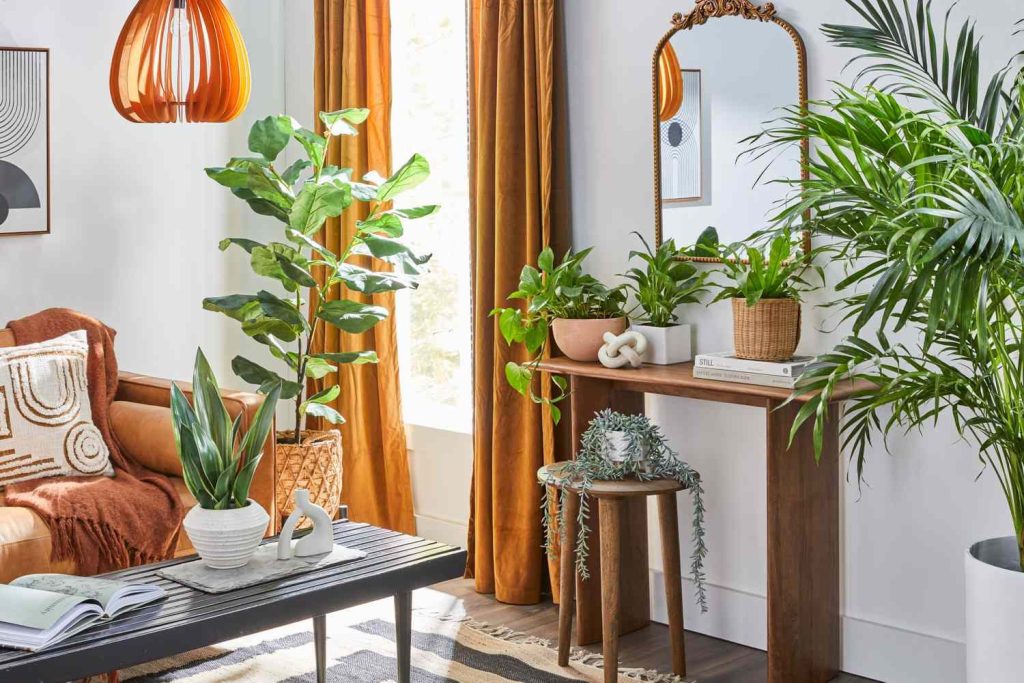
Indoor plants are more than just decorative elements; they’re living, breathing artwork that can transform any space. Large statement plants like Fiddle Leaf Figs or Bird of Paradise can serve as stunning focal points, drawing the eye and creating visual interest in otherwise empty corners.
Consider creating a curated collection of plants with varying heights, textures, and leaf patterns. Mix trailing plants like Pothos or String of Pearls with upright specimens such as Snake Plants or ZZ Plants. This layered approach adds depth and dimension to your space while naturally purifying the air and improving indoor air quality.
2. Natural Fiber Textiles
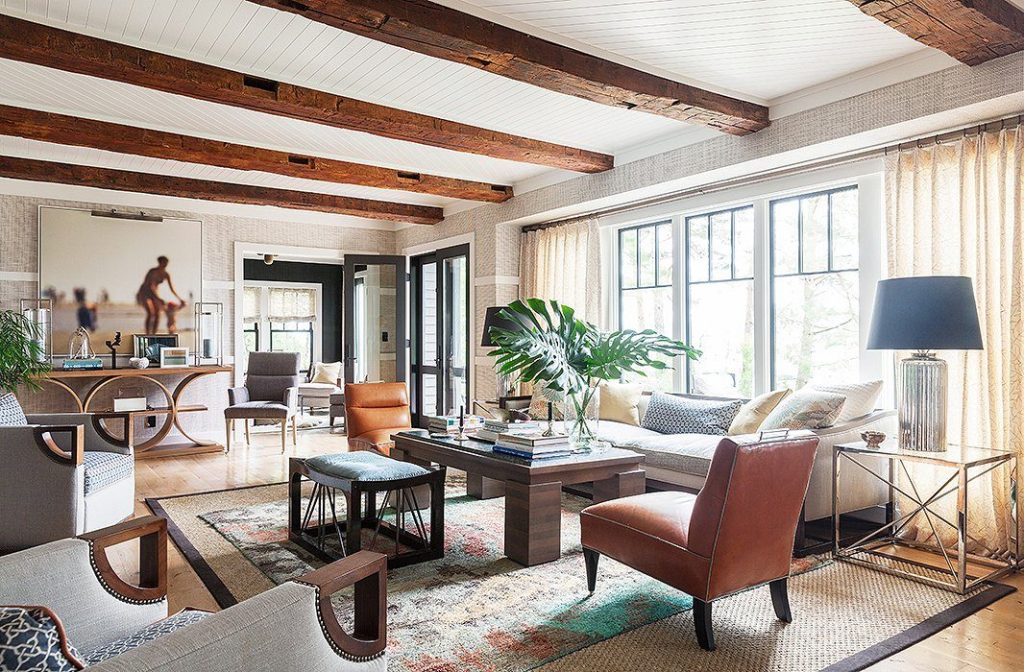
Incorporating natural fiber textiles brings organic texture and warmth to your living room. Choose materials like linen, cotton, jute, or hemp for curtains, throw pillows, and blankets to add layers of visual and tactile interest to your space.
These materials not only look beautiful but also age gracefully, developing character over time. Consider mixing different textures – perhaps a chunky wool throw draped over a linen sofa, or jute cushions paired with smooth cotton covers – to create a rich, multisensory experience that invites touch and interaction.
3. Exposed Wood Elements
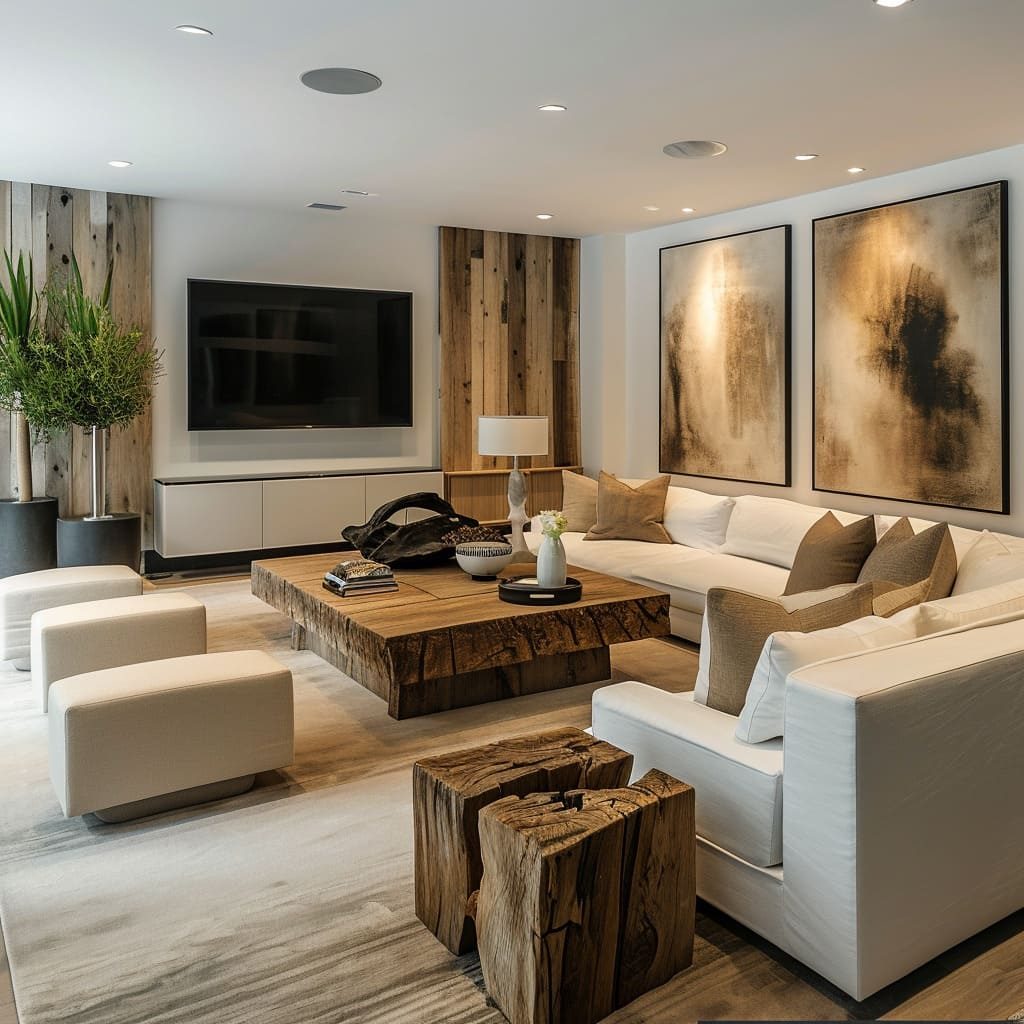
Wood brings an unmatched warmth and natural beauty to any living space. From exposed ceiling beams to hardwood flooring, or even carefully selected wooden furniture pieces, this versatile material can anchor your room’s natural design scheme.
Consider incorporating different wood tones and grains to create visual interest. Mix light ash or pine with darker walnut or mahogany to add depth and contrast. Raw edge or live edge furniture pieces can serve as striking conversation starters while maintaining that crucial connection to nature.
Related Guide: 13 Living Room Flooring Ideas
4. Stone and Crystal Accents
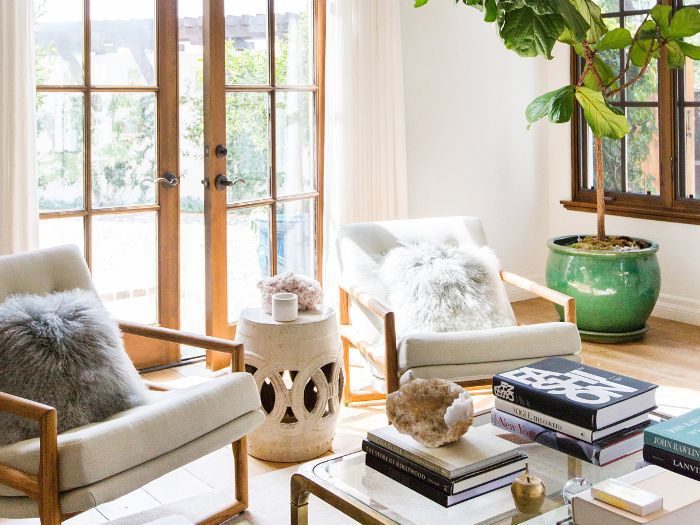
Introducing stone elements into your living room design adds an element of earthiness and geological intrigue. From marble coffee tables to granite accent pieces, or even a collection of crystals displayed on shelving, these elements bring a sense of grounding energy to the space.
Consider incorporating river rocks in decorative bowls, geode bookends, or a statement piece like an agate slice wall hanging. These natural elements not only add visual interest but also create talking points and bring subtle color variations to your decor scheme.
5. Natural Light Optimization

Maximizing natural light is crucial in creating a vibrant, nature-inspired living space. Remove heavy window treatments in favor of sheer, natural fiber curtains that filter light beautifully while maintaining privacy.
Position mirrors strategically to reflect and amplify natural light throughout the room. Consider installing skylights or larger windows if possible, creating a stronger connection between indoor and outdoor spaces while reducing the need for artificial lighting during daylight hours.
6. Organic Color Palette
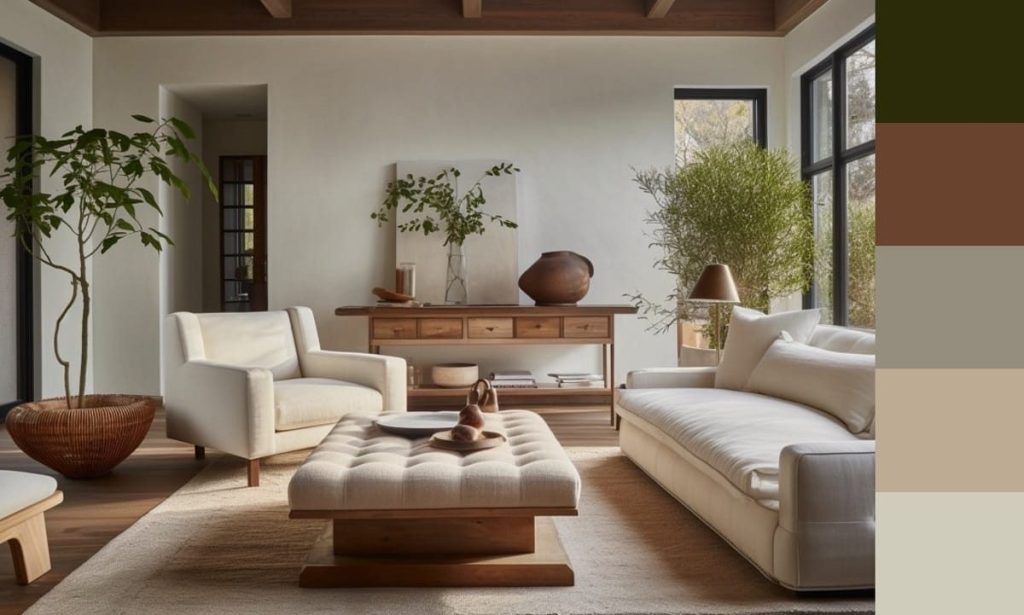
Embrace colors found in nature to create a calming, cohesive space. Think warm earth tones, soft greens, sky blues, and sandy neutrals. These colors work together harmoniously because they mirror the natural world.
Layer these colors thoughtfully, using darker shades for grounding elements and lighter tones for accent pieces. Don’t forget to incorporate white space to prevent the room from feeling overwhelming – just as nature includes moments of visual rest.
7. Woven Basket Storage
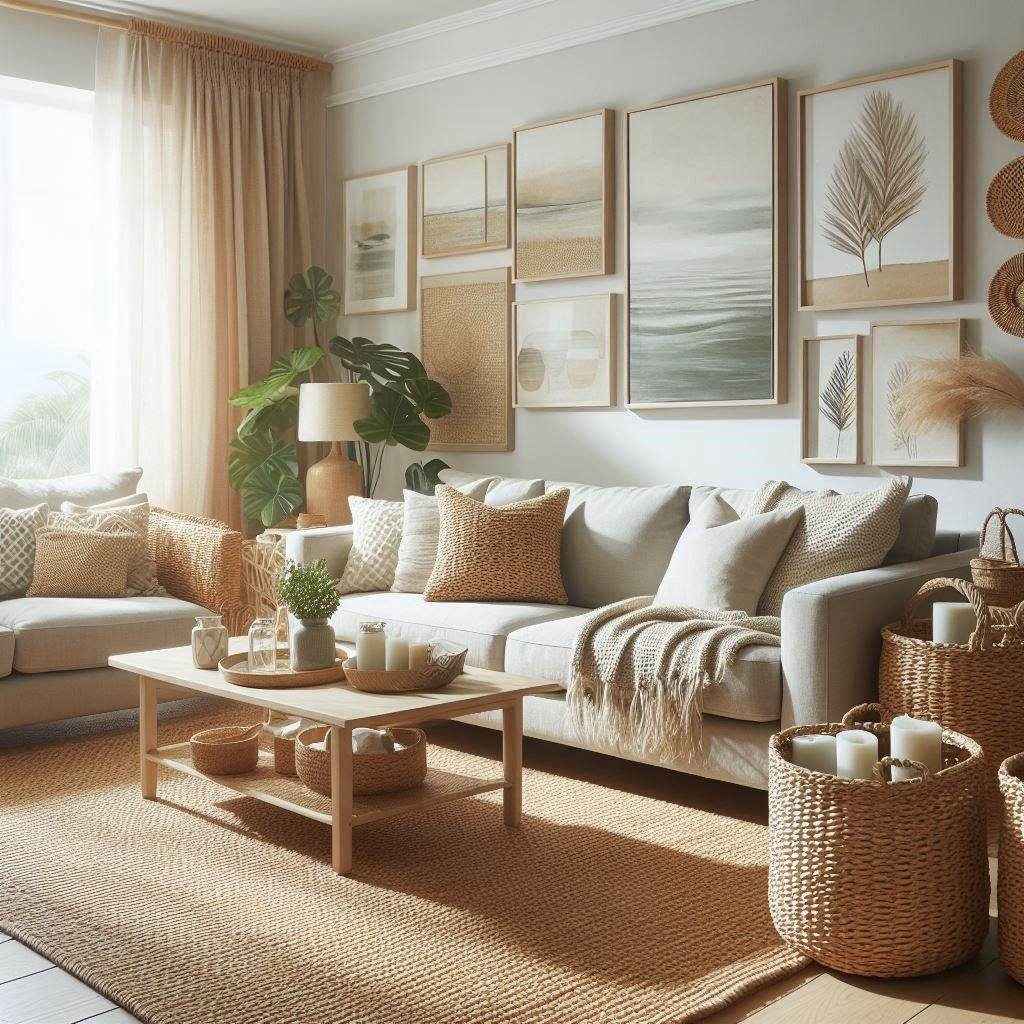
Incorporate natural storage solutions through woven baskets made from materials like rattan, seagrass, or bamboo. These pieces are both functional and decorative, offering practical storage while adding texture and visual interest to your space.
Create collections of different sized baskets to store everything from throw blankets to magazines. Consider hanging woven wall baskets as art pieces or using them as planters to add vertical interest to your room’s design.
8. Natural Air Flow
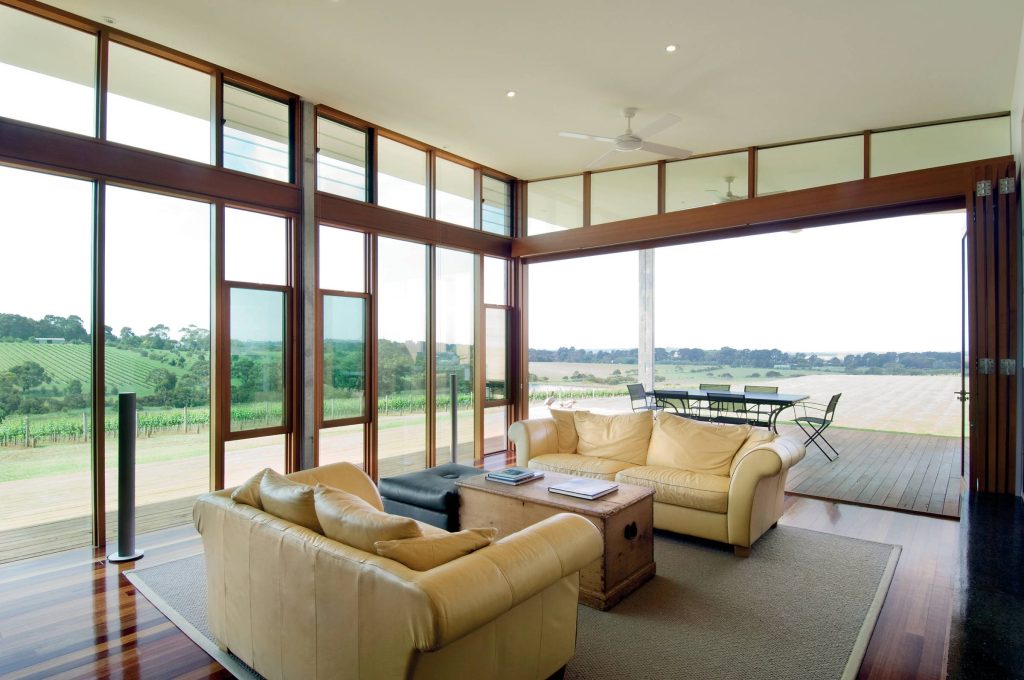
Create a space that promotes natural air circulation through thoughtful furniture placement and window positioning. This not only improves air quality but also creates a more pleasant living environment.
Consider installing ceiling fans with wooden blades or using decorative screens made from natural materials to direct air flow. Place furniture in ways that don’t obstruct natural air patterns, allowing fresh breezes to move freely through the space.
9. Botanical Artwork
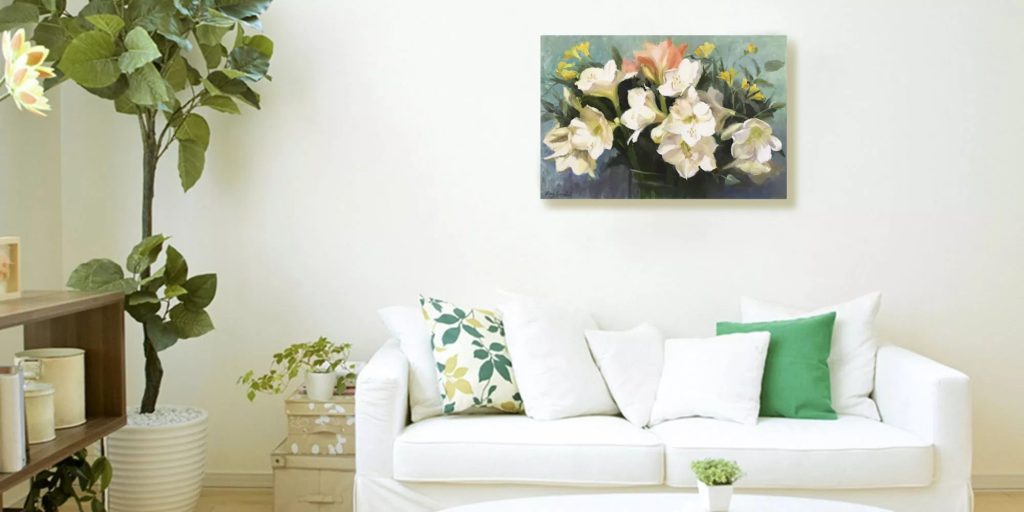
Incorporate nature-inspired artwork that celebrates the beauty of flora and fauna. Choose botanical prints, pressed flower art, or nature photography to create focal points that reinforce your natural design theme.
Mix different styles and sizes of artwork to create an engaging gallery wall, or choose one large-scale piece to serve as a room’s centerpiece. Consider vintage botanical illustrations for a touch of classical elegance, or modern interpretations for a contemporary feel.
10. Sustainable Furniture Choices
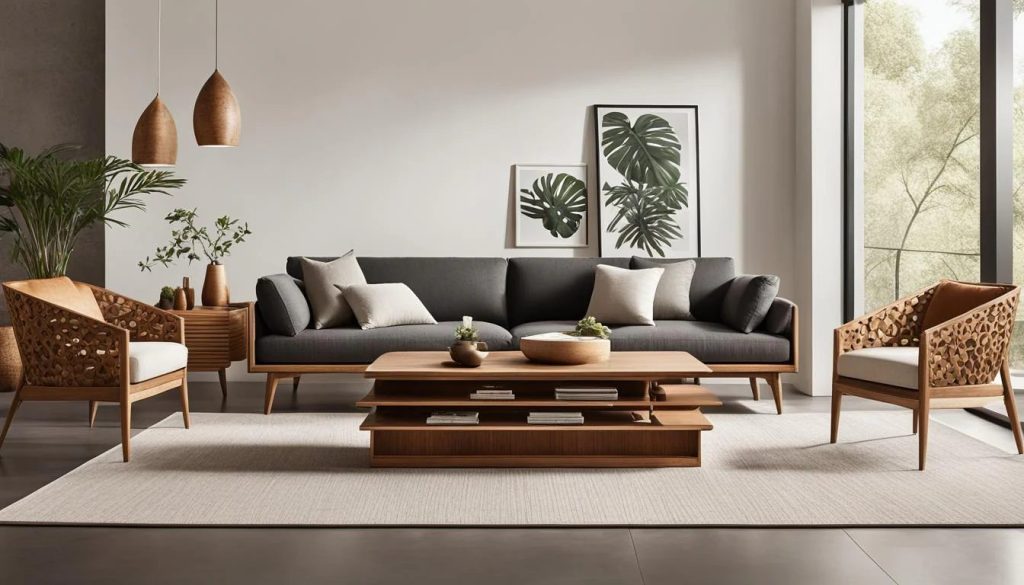
Select furniture pieces made from sustainable materials or reclaimed wood. These pieces not only support environmental consciousness but also bring unique character and history to your living space.
Look for pieces that showcase natural imperfections and tell a story through their materials. Consider furniture made from bamboo, recycled materials, or salvaged wood to create an eco-friendly and visually interesting environment.
11. Natural Room Dividers
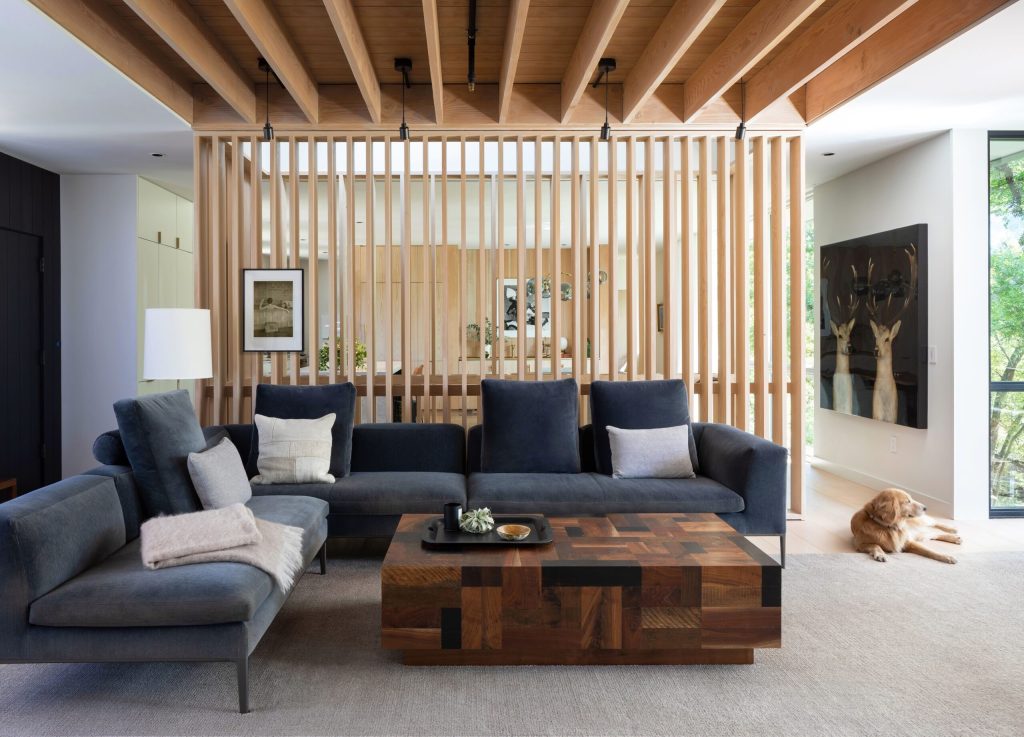
Use natural elements as room dividers or space definers. Living walls, bamboo screens, or open shelving filled with plants can create subtle boundaries while maintaining an organic flow between spaces.
These dividers can also serve multiple purposes – providing privacy, improving acoustics, and adding visual interest to your space while maintaining the natural theme throughout.
Related Guide: 13 Orange Couch Living Room Ideas
12. Terra Cotta and Ceramic Elements
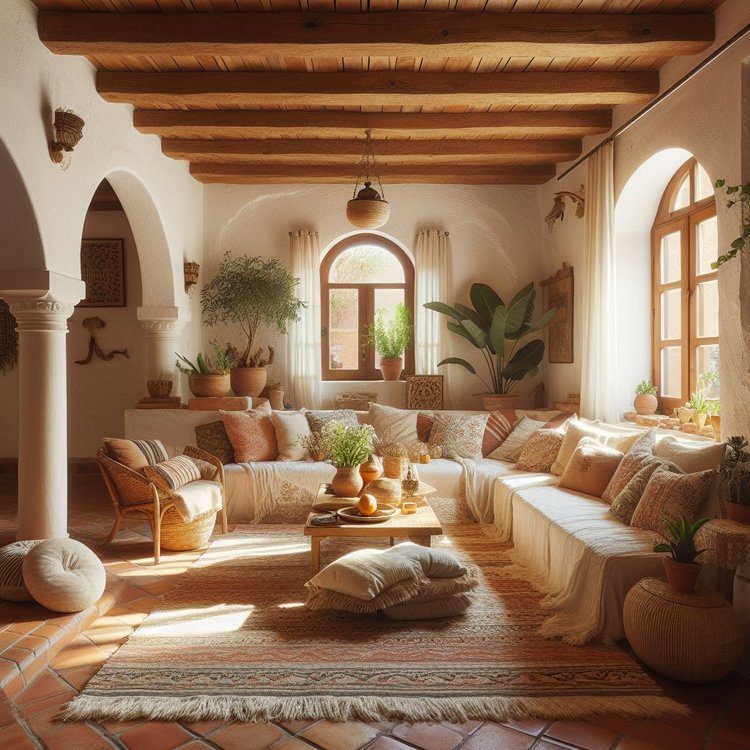
Incorporate handmade ceramic pieces and terra cotta elements to add warmth and artisanal charm to your space. These materials bring an earthy, grounded feeling while celebrating traditional craftsmanship.
Mix different textures and glazes to create visual interest, from smooth, polished ceramics to rough, natural terra cotta. Use these elements for both decorative purposes and functional items like planters or vases.
13. Natural Sound Elements
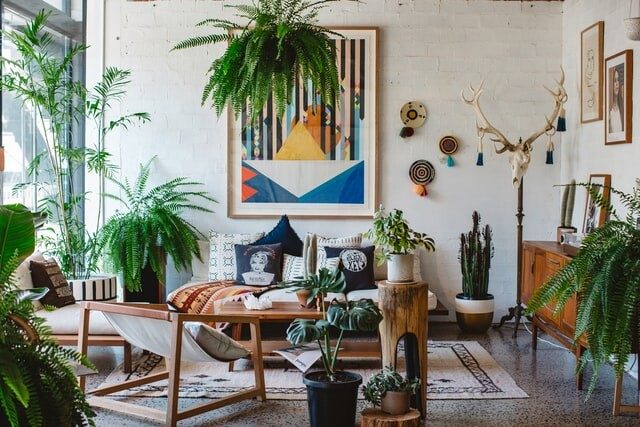
Create a multisensory experience by incorporating natural sound elements. Water features, wind chimes made from natural materials, or even strategically placed acoustic elements can enhance the natural ambiance of your space.
Consider how these sound elements can work with your room’s layout to create zones of tranquility or mask unwanted noise from outside, contributing to a more peaceful living environment.
14. Organic Patterns and Textures
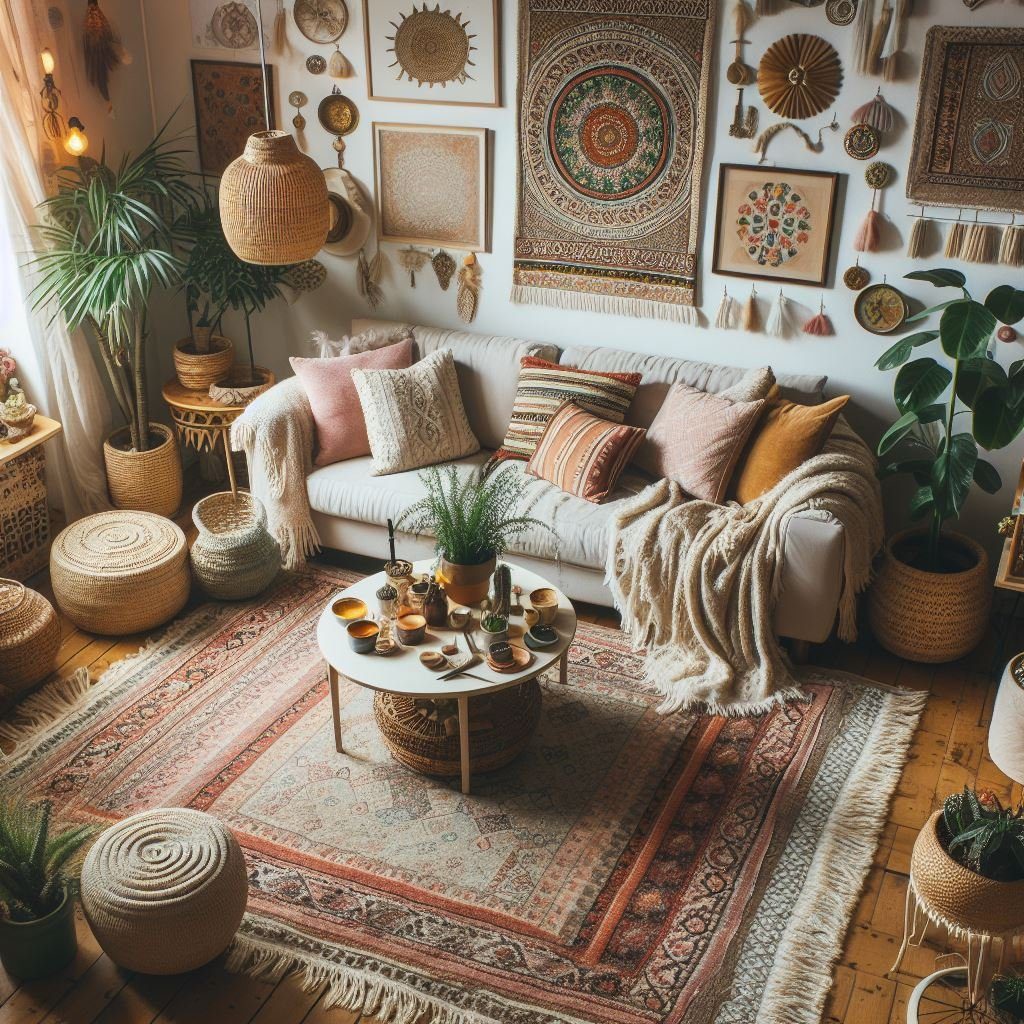
Incorporate patterns and textures inspired by nature through wallpaper, textiles, or decorative elements. Think leaf prints, wave patterns, or abstract designs that mirror natural formations.
Layer these patterns thoughtfully, mixing scale and complexity while maintaining a cohesive color palette. Use these elements to add depth and interest to your space without overwhelming the overall design.
Conclusion
Transforming your living room with natural decor elements is more than just a design choice – it’s a lifestyle decision that can significantly impact your daily well-being. By thoughtfully incorporating these fourteen natural decor ideas, you can create a space that not only looks beautiful but also feels inherently connected to the natural world.
Remember that the key to successful natural decor lies in balance – mixing textures, materials, and elements while maintaining harmony and functionality.
As we continue to seek refuge from our increasingly digital world, creating these natural sanctuaries within our homes becomes not just desirable, but essential for our physical and mental well-being.
Let your living room become a testament to the beauty and tranquility of nature, creating a space where you can truly relax, recharge, and reconnect with the organic world.

